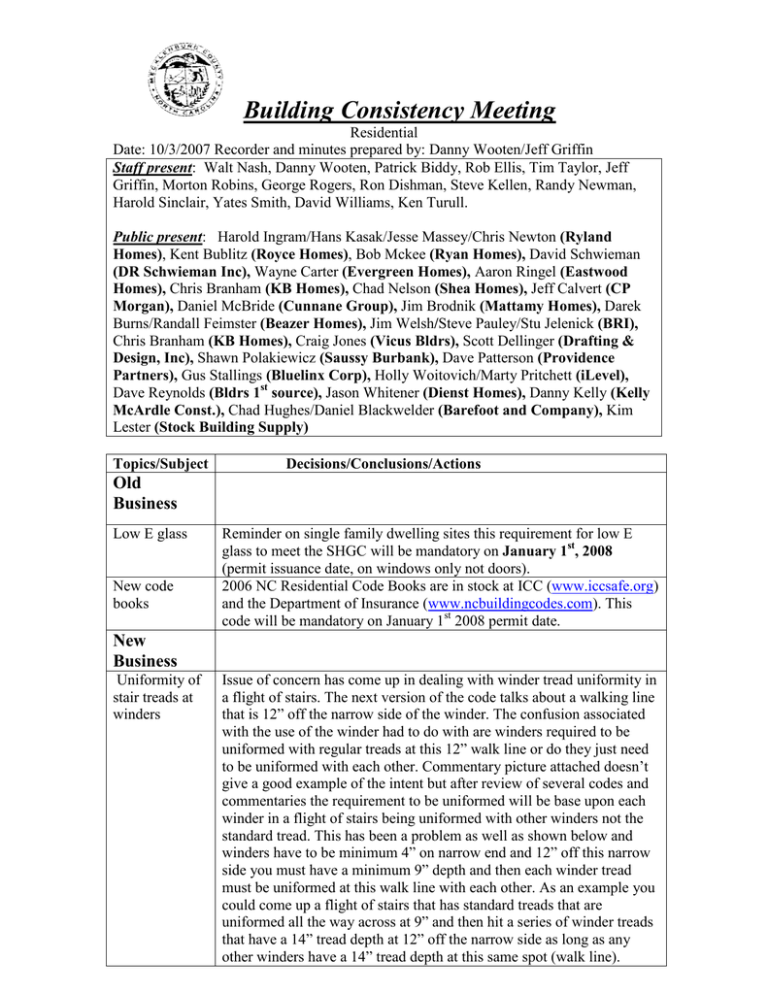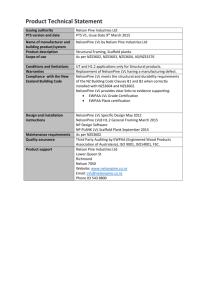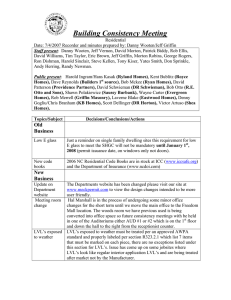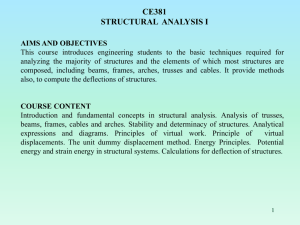Building Consistency Meeting
advertisement

Building Consistency Meeting Residential Date: 10/3/2007 Recorder and minutes prepared by: Danny Wooten/Jeff Griffin Staff present: Walt Nash, Danny Wooten, Patrick Biddy, Rob Ellis, Tim Taylor, Jeff Griffin, Morton Robins, George Rogers, Ron Dishman, Steve Kellen, Randy Newman, Harold Sinclair, Yates Smith, David Williams, Ken Turull. Public present: Harold Ingram/Hans Kasak/Jesse Massey/Chris Newton (Ryland Homes), Kent Bublitz (Royce Homes), Bob Mckee (Ryan Homes), David Schwieman (DR Schwieman Inc), Wayne Carter (Evergreen Homes), Aaron Ringel (Eastwood Homes), Chris Branham (KB Homes), Chad Nelson (Shea Homes), Jeff Calvert (CP Morgan), Daniel McBride (Cunnane Group), Jim Brodnik (Mattamy Homes), Darek Burns/Randall Feimster (Beazer Homes), Jim Welsh/Steve Pauley/Stu Jelenick (BRI), Chris Branham (KB Homes), Craig Jones (Vicus Bldrs), Scott Dellinger (Drafting & Design, Inc), Shawn Polakiewicz (Saussy Burbank), Dave Patterson (Providence Partners), Gus Stallings (Bluelinx Corp), Holly Woitovich/Marty Pritchett (iLevel), Dave Reynolds (Bldrs 1st source), Jason Whitener (Dienst Homes), Danny Kelly (Kelly McArdle Const.), Chad Hughes/Daniel Blackwelder (Barefoot and Company), Kim Lester (Stock Building Supply) Topics/Subject Decisions/Conclusions/Actions Old Business Low E glass New code books Reminder on single family dwelling sites this requirement for low E glass to meet the SHGC will be mandatory on January 1st, 2008 (permit issuance date, on windows only not doors). 2006 NC Residential Code Books are in stock at ICC (www.iccsafe.org) and the Department of Insurance (www.ncbuildingcodes.com). This code will be mandatory on January 1st 2008 permit date. New Business Uniformity of stair treads at winders Issue of concern has come up in dealing with winder tread uniformity in a flight of stairs. The next version of the code talks about a walking line that is 12” off the narrow side of the winder. The confusion associated with the use of the winder had to do with are winders required to be uniformed with regular treads at this 12” walk line or do they just need to be uniformed with each other. Commentary picture attached doesn’t give a good example of the intent but after review of several codes and commentaries the requirement to be uniformed will be base upon each winder in a flight of stairs being uniformed with other winders not the standard tread. This has been a problem as well as shown below and winders have to be minimum 4” on narrow end and 12” off this narrow side you must have a minimum 9” depth and then each winder tread must be uniformed at this walk line with each other. As an example you could come up a flight of stairs that has standard treads that are uniformed all the way across at 9” and then hit a series of winder treads that have a 14” tread depth at 12” off the narrow side as long as any other winders have a 14” tread depth at this same spot (walk line). Poly vapor Question asked about termination point of poly vapor barrier when barrier in mono installed on a mono slab. Poly should be draped over the side of the slab slab installation area and down to base of footer (or within the required depth of footer) but doesn’t have to run across base of footer and up outside forms. Continuous steel at corners in footers There is an issue that has come up about rebar located in a residential footer and if the steel needs to be bent around corners with proper laps or can it be crossed over. After review with several local engineering firms on a good soil lot (2000psf or better) the steel can be lapped as shown in the picture below but on sites with bad soils (caisson or pile footers as examples) or specifically called out by an engineer on plans steel will need to be bent around corners and lapped correctly. Perimeter slab insulation Gator Mouth splices in rafter spans Townhouse property lines at building end units Question was asked about perimeter slab insulation and when can it be left out as a prescriptive requirement. This change doesn’t go into effect until the next version of the Code which will be allowed on January 1st 2006. This will only require s few mountain counties to have slab insulation but Mecklenburg will no longer require per our zone and Res Check proving compliance will not be needed for deletion of this 1 item. In dealing with many field framed roof systems there is a need to splice rafters in span; typically this is seen as a gator mouth splice. The code doesn’t allow this application in span but if a brace is properly installed at this location bracing down to a bearing wall will be allowed. A concern has come up with townhouse units and how some builders are deeding end units with the actual property lines right in line with the end walls of those units (no side yard). This would not be a zoning issue and the building code would allow but only as a 1 hour wall with no openings (windows/doors) per section R302. Builders should make sure in most cases that are giving at least 3’ on the end units as far as actual property lines. Picture below is an example a townhouse community showing property lines in line with the end walls. Plan review and field issues on I-joists and LVL beams Errata sheets for ’06 code Fireblocking/ firstopping R602.8 & R602.8.1 Masonry fireplace R1003.10 Hearth extensions Fireplace/ Chimney inspection Question asked about what information is required for plan review and field inspectors when dealing with I-joists floors and LVL beams. Attached draft is presented for consideration and further comments. Notified the group that NC errata sheets are now available on the State’s website for the ’06 code. Errata sheets deal with printing correction to the code and everyone should download a copy to include in your ’06 residential Code book to correct several mistakes found in first printing. Because this book will only be used for 1 year ICC is not sure there will be a second printing. Errata sheets are posted on www.ncbuildingcodes.com. This issue has been brought up in previous meetings but in order to see all the penetrations sealed properly all firestopping/blocking or crawl space sealing will be checked at frame inspection. Any caulking, packing of insulation or other method for firestopping that is used should be in place at this inspection. Crawl spaces have to be air sealed and standard caulking can be used in this application but insulation packing crawl space penetrations is specifically prohibited by Code. Question asked about how to measure hearth extension, should they be measure before trim around fireplace open like stone work is installed or after. Section R1003.10 simply states that the extension should extend at least 16” (or great depending on the size of the fireplace) in front of fireplace opening. If stone is applied at fireplace opening you should measure from the face of the stone to the leading edge of the hearth extension. This is also pictured in the Code in figure R1003.1 on the right side with brick veneer instead of stone installed. Picture will show a “C” dimension from face of veneer. Question was asked about the need for a special inspection to be called in for masonry fireplaces/chimney. There is no requirement for a fireplace to be called in separately and should be installed to verify all clearances at frame inspection. Inspectors have 2 opportunities to view a masonry fireplace 1 is at the frame and the other is at final. No additional inspection required. Winder commentary example: Only difference in picture above is IRC is 10” depth NC is 9” depth at the 12” mark and 4” at the narrow point in NC not 6”. LVL beams and I joists requirements (Plan review/field requirements) Draft I joists (no sealed design required)• • Option 1-Builder to provide layout sheet (from supplier) with all mfg details as needed like cantilevers, blocking panels, web filler, etc…. Option 2- Builder can incorporate I-joists into base blueprint as long as all other details as indicated in option #1 are reproduced on drawings. LVL beam requirements • • Option 1- Engineer details all LVL locations on plans to include # of jack studs required to support each beam and footers/foundations needed. Complete engineering shown on plans no additional information needed, like LVL spec sheets. Option 2- A builder can provide an I-joist layout sheet showing all beam locations with column loads values given or a blueprint indicating specific beam locations with column loads given. In addition to identifying the locations of beams a builder must provide detailed specification sheet on each beam showing loads on each. A uniformly loaded beam does not require this spec sheet to be sealed by an engineer. Any LVL beam with a concentrated column load on it will require the spec sheet to be sealed by an engineer. After the beam location is listed, spec sheets are provided there needs to be a way to handle supports for those beams to include footers since this option has no engineer of record for the project. Jack studs requirements found in Table R502.5 (1 & 2) can be used if beam is carrying uniformed loads where dimensional lumber would have spanned opening, otherwise engineered jack studs need to be called out or an alternate engineered jack stud table listing loads allowed for # of studs can be reproduced on the plans. This would not require the entire plan to be engineered just a support table that is sealed which can be reproduced (as allowed by engineer) on builders plans. Other option is this jack stud support can be specifically listed on the LVL detail sheet (note: currently not all mfg spec supports required). Foundation/footer for column loads under these LVL beams must be designed by an engineer or tables showing load values as approved by DOI and found on The NC Wood truss council website, can be reproduced on the plans as needed that will handle loads up to 14,000lbs. Summary of 4 items needed under option #2: 1. 2. 3. 4. Show LVL location/column loads on layout or plans Provide spec sheets on all LVL beams, column loads sealed Provide info on jack studs Provide info on footer/foundation requirements for column loads





